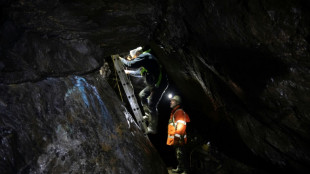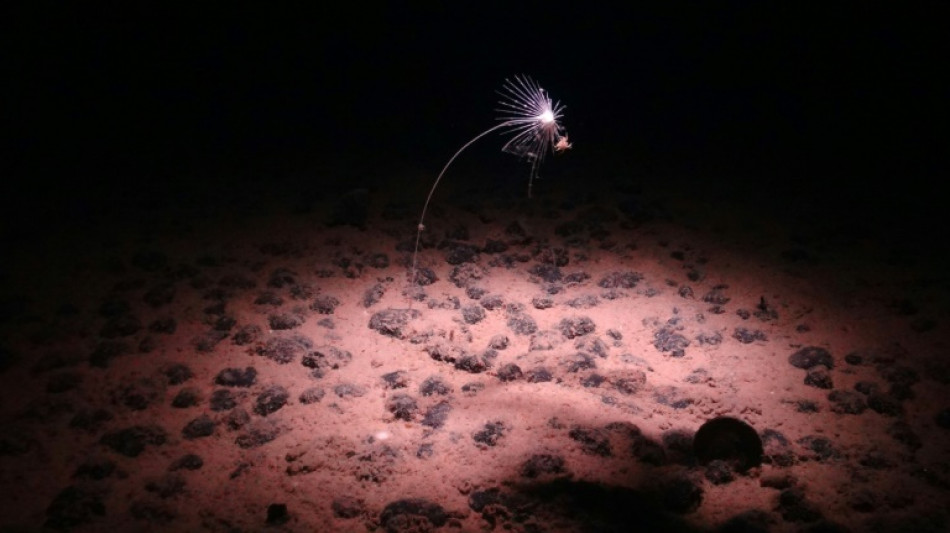
-
 Zuckerberg denies Meta bought rivals to conquer them
Zuckerberg denies Meta bought rivals to conquer them
-
Starc stars as Delhi beat Rajasthan in Super Over

-
 Weinstein asks to sleep in hospital, citing prison 'mistreatment'
Weinstein asks to sleep in hospital, citing prison 'mistreatment'
-
Amorim asks McIlroy to bring Masters magic to Man Utd

-
 Ruud keeps Barcelona Open defence on course
Ruud keeps Barcelona Open defence on course
-
Trump tariffs could put US Fed in a bind, Powell warns

-
 CONCACAF chief rejects 64-team World Cup plan for 2030
CONCACAF chief rejects 64-team World Cup plan for 2030
-
Putin praises Musk, compares him to Soviet space hero

-
 Son to miss Spurs' Europa League trip to Frankfurt
Son to miss Spurs' Europa League trip to Frankfurt
-
US senator in El Salvador seeking release of wrongly deported migrant

-
 Trump tariffs could put the US Fed in a bind, Powell warns
Trump tariffs could put the US Fed in a bind, Powell warns
-
US judge says 'probable cause' to hold Trump admin in contempt

-
 India opposition slams graft charges against Gandhis
India opposition slams graft charges against Gandhis
-
Nate Bargatze to host Emmys: organizers

-
 US Fed Chair warns of 'tension' between employment, inflation goals
US Fed Chair warns of 'tension' between employment, inflation goals
-
Trump touts trade talks, China calls out tariff 'blackmail'

-
 US judge says 'probable cause' to hold govt in contempt over deportations
US judge says 'probable cause' to hold govt in contempt over deportations
-
US eliminates unit countering foreign disinformation

-
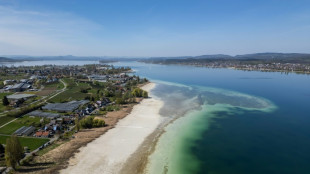 Germany sees 'worrying' record dry spell in early 2025
Germany sees 'worrying' record dry spell in early 2025
-
Israel says 30 percent of Gaza turned into buffer zone

-
 TikTok tests letting users add informative 'Footnotes'
TikTok tests letting users add informative 'Footnotes'
-
Global uncertainty will 'certainly' hit growth: World Bank president

-
 EU lists seven 'safe' countries of origin, tightening asylum rules
EU lists seven 'safe' countries of origin, tightening asylum rules
-
Chelsea fans must 'trust' the process despite blip, says Maresca

-
 Rebel rival government in Sudan 'not the answer': UK
Rebel rival government in Sudan 'not the answer': UK
-
Prague zoo breeds near-extinct Brazilian mergansers
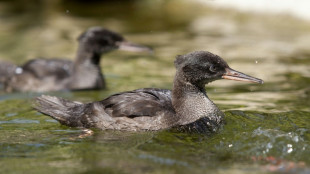
-
 Macron to meet Rubio, Witkoff amid transatlantic tensions
Macron to meet Rubio, Witkoff amid transatlantic tensions
-
WTO chief says 'very concerned' as tariffs cut into global trade
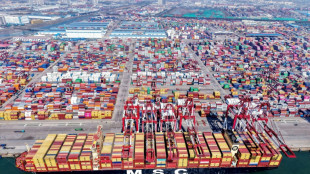
-
 Sports bodies have 'no excuses' on trans rules after court ruling: campaigners
Sports bodies have 'no excuses' on trans rules after court ruling: campaigners
-
Zverev joins Shelton in Munich ATP quarters

-
 The Trump adviser who wants to rewrite the global financial system
The Trump adviser who wants to rewrite the global financial system
-
US senator travels to El Salvador over wrongly deported migrant

-
 UN watchdog chief says Iran 'not far' from nuclear bomb
UN watchdog chief says Iran 'not far' from nuclear bomb
-
Trump says 'joke' Harvard should be stripped of funds

-
 Macron vows punishment for French prison attackers
Macron vows punishment for French prison attackers
-
Canada central bank holds interest rate steady amid tariffs chaos

-
 Rubio headed to Paris for Ukraine war talks
Rubio headed to Paris for Ukraine war talks
-
Australian PM vows not to bow to Trump on national interest
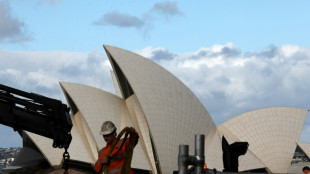
-
 New attacks target France prison guard cars, home
New attacks target France prison guard cars, home
-
Global trade uncertainty could have 'severe negative consequences': WTO chief
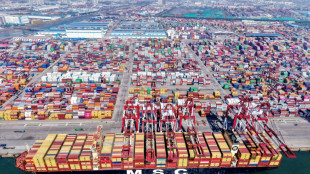
-
 Google facing £5 bn UK lawsuit over ad searches: firms
Google facing £5 bn UK lawsuit over ad searches: firms
-
Onana to return in goal for Man Utd against Lyon: Amorim

-
 Tiktok bans user behind Gisele Pelicot 'starter kit' meme
Tiktok bans user behind Gisele Pelicot 'starter kit' meme
-
'Put it on': Dutch drive for bike helmets

-
 China's Xi meets Malaysian leaders, vows to 'safeguard' Asia allies
China's Xi meets Malaysian leaders, vows to 'safeguard' Asia allies
-
France urges release of jailed Russian journalists who covered Navalny

-
 Gabon striker Boupendza dies after 11th floor fall
Gabon striker Boupendza dies after 11th floor fall
-
UK top court rules definition of 'woman' based on sex at birth

-
 PSG keep Champions League bid alive, despite old ghosts reappearing
PSG keep Champions League bid alive, despite old ghosts reappearing
-
Stocks retreat as US hits Nvidia chip export to China
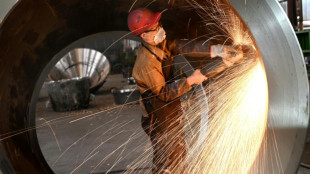

Race to name creatures of the deep as mining interest grows
In the cold, lightless Pacific Ocean deep, the seabed is scattered with metal-rich rocks coveted by miners -- and huge numbers of strange and rare animals almost entirely unknown to science.
Researchers are scrambling to name thousands of these newly discovered species.
The mining industry is pushing regulators to finalise rules that could open the way for extraction in parts of the vast Clarion-Clipperton Zone (CCZ), stretching between Hawaii and Mexico.
Once thought an underwater wasteland, the CCZ is now known to harbour an abundance of wildlife.
They range from tiny worms in the muddy sediment, to floating sponges tethered to the rocks like aquatic balloons and a giant sea cucumber dubbed the "gummy squirrel".
Campaigners say this biodiversity is the true treasure of Earth's largest and least understood environment.
They warn that mining could drive species into extinction before they have even been discovered.
Interest in mining the potato-sized "nodules", which contain metals used in technologies such as smartphone touchscreens and rechargeable batteries, has opened the way for researchers to explore the CCZ.
"We have a far greater understanding of that part of the world than we would have had if we weren't trying to exploit it," said Tammy Horton at Britain's National Oceanography Centre (NOC).
Scientists have scooped up sediment in box cores dropped from ships and deployed remote vehicles to take pictures and collect samples from the seafloor.
A snapshot of any given patch of CCZ seafloor might show just a solitary brittle star, but researchers seldom see the same creature twice.
There are "huge numbers of rare species", said Horton, adding that much of the diversity was among the creatures living in the mud.
The nodules are also a unique habitat, like coral gardens in miniature.
- 'First step' -
The first stocktake of data from scientific explorations in the CCZ, published in 2023, found that some 90 percent of 5,000 animal species recorded were new to science.
The International Seabed Authority (ISA) has set a target for over a thousand species to be described by 2030 in the regions targeted by miners.
The process is painstaking.
Where possible, each animal needs to be sketched, dissected and assigned a molecular "barcode" -- a sort of DNA fingerprint that allows other researchers to identify it.
It took Horton and a team of specialists a year to describe 27 of the hundred or more unnamed amphipods -- a type of small crustacean.
"The fundamental, basic, first step in any understanding of an environment is knowing what the animals are, how many of them there are and how wide their distribution is," she told AFP.
This would map out a baseline for life in the abyssal plain, so that potential harm can be better understood.
Conservation group Fauna & Flora has said risks range from damage to the ocean food web, to the potential for exacerbating climate change -- by churning up sediment that stores planet-heating carbon.
The ISA is due to finalise the international seabed mining code this year, but much work needs to be done.
- Cold War connections -
The oldest mining test site is a strip of CCZ seabed, ploughed in 1979.
Daniel Jones, a NOC researcher who trawled the archives to pinpoint the location, said the test followed an CIA plot to recover a Russian nuclear submarine, using deep-sea mining as a cover story.
The CIA leased a ship for real deep-sea mining, according to Jones.
He found an old photograph of the roughly eight-metre- (26-feet-) wide machine used to harvest nodules.
His team visited the test site in 2023, more than 40 years after the original disturbance.
Machine tracks were still clearly visible on the seafloor, he said.
There was "the first evidence of biological recovery" along the mined tracks, Jones told reporters recently, but the animals were not back up to their normal densities.
The slow pace of change in the CCZ is illustrated by the nodules themselves, likely millions of years in the making.
Each one probably started as a shard of hard surface -- a shark tooth or a fish ear bone -- that settled on the seabed.
They then grew slowly, by attracting minerals that naturally occur in the water at extremely low concentrations.
They contain metals like cobalt that are particularly in demand in the energy transition.
But the European Academies of Science Advisory Council (EASAC) has said the need for the nodules has been overstated and urged a mining moratorium.
EASAC Environment Director Michael Norton said that once started, deep sea exploitation would be hard to stop.
"It's a one-way street," he said. "Once you go down it, you won't turn around willingly."
E.Gasser--VB

